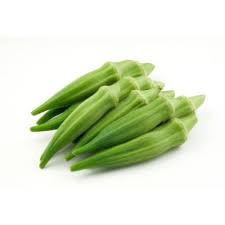Dehydrated Okro Production in Nigeria; The Feasibility Report.

Okra (Abelmoschus esculentus [L.] Moench) is an annual crop belonging to the family Malvaceae. It is an important vegetable especially in West Africa, India, Brazil and the United States. Abelmoschus has several cultivated species of economic importance, two of which was identified as Abelmoschus esculentus and Abelmoschus caillei.
The name ‘okra’ probably derives from one of the Niger-Congo group of languages. The term okra was in use in English by the late 18th century.
Okra probably originated somewhere around Ethiopia, and was cultivated by the ancient Egyptians by the 12th century B.C. Its cultivation spread throughout North Africa and the Middle East. The seed pods were eaten cooked, and the seeds were toasted and ground, used as a coffee substitute (and still is).
Okra came to the Caribbean and the U.S. in the 1700s, probably brought by slaves from West Africa, and was introduced to Western Europe soon after. In Louisiana, the Creoles learned from slaves the use of okra (gumbo) to thicken soups and it is now an essential in Créole Gumbo.
Today okra is popular in Africa, the Middle East, Greece, Turkey, India, the Caribbean, South America and the Southern U.S. It is not a very common vegetable in most European countries, except for Greece and parts of Turkey.
Okra is commonly associated in Southern, Creole, and Cajun cooking since it was initially introduced into the United States in its southern region. It grows well in the southern United States where there is little frost.
Due to increased interest in American regional foods, these bright green, tender pods have gained more respect as a vegetable in the U.S., aside from its use as a thickener.
In Nigeria, there are two distinct seasons for okra production, the peak and the lean seasons. During the lean (dry) season, okra fruit are produced in low quantities, scarce and expensive to get. In the peak (peak) season, it is produced in large quantities much more than what the local populace can consume.
Okra soup is prepared using the edible green seed pods of the okra flowering plant as a primary ingredient. It is greenish in colour. Okra has a slippery feel when rubbed with the fingers. The edible green seed pods can also be used in stews.
Okra could be stored for future use. The problem of spoilage encountered during production could be overcome through proper preservation.
This report seeks to examine the financial viability or otherwise of producing dehydrated okro from okro in Nigeria.
Table of Contents
EXECUTIVE SUMMARY 1.0 Business Overview 1.1 Description of the Business 1.2 Vision and Mission Statement 1.3 Business Objective 1.4 Critical Success Factor of the Business 1.5 Current Status of Business 1.6 Description of the Business Industry 1.7 Contribution to Local and National Economy 2. Marketing Plan 2.1 Description of product 2.2 Product Packaging and delivery 2.3 The Opportunity 2.4 Pricing Strategy 2.5 Target Market 2.6 Distribution and Delivery Strategy 2.7 Promotional Strategy 2.8 Competition 3. Production Plan 3.1 Description of the Location 3.2 Raw Materials 3.3 Production Equipment 3.4 Production Process 3.5 Production Cost 3.6 Stock Control Process 3.7 Pre-Operating activities and expenses 3.7.1 Operating Activities and Expenses 3.8 Project Implementation Schedule 4.0 Organizational and Management Plan 4.1 Ownership of the business 4.2 Profile of the promoters 4.3 Key Management Staff 4.3.2 Management Support Units 4.4 Details of salary schedule 5. Financial Plan 5.1 Financial Assumption 5.2 Start -up Capital Estimation 5.3 Source of Capital 5.4 Security of Loan 5.5 Loan Repayment Plan 5.6 Profit and Loss Analysis 5.7 Cash Flow Analysis 5.8 Viability Analysis 6.0 Business Risk and mitigation factor 6.1 Business Risks 6.2 SWOT Analysis
Project Specification:
Additional Info
Get this Report
Direct bank transfer
To order the report, Please do pay the sum of ₦30,000 into
Account Name : Foraminifera Market Research Ltd
Account Number : 274 20 569 37
Account Name : Foraminifera Market Research Ltd
Account Number : 101 76 603 95
Account Name : Foraminifera Ventures
Account Number : 011 66 066 32
Make your payment directly into our bank account. Please use your Order ID as the payment reference. Your order will not be shipped until the funds have cleared in our account.
Instructions
After payment call us on 01 -29 52 413 / 08033782777 or email us at foraminiferamarketresearch@yahoo.com with the payment details. After payment confirmation, the soft copy of the report would be sent to you within 24 hours.



